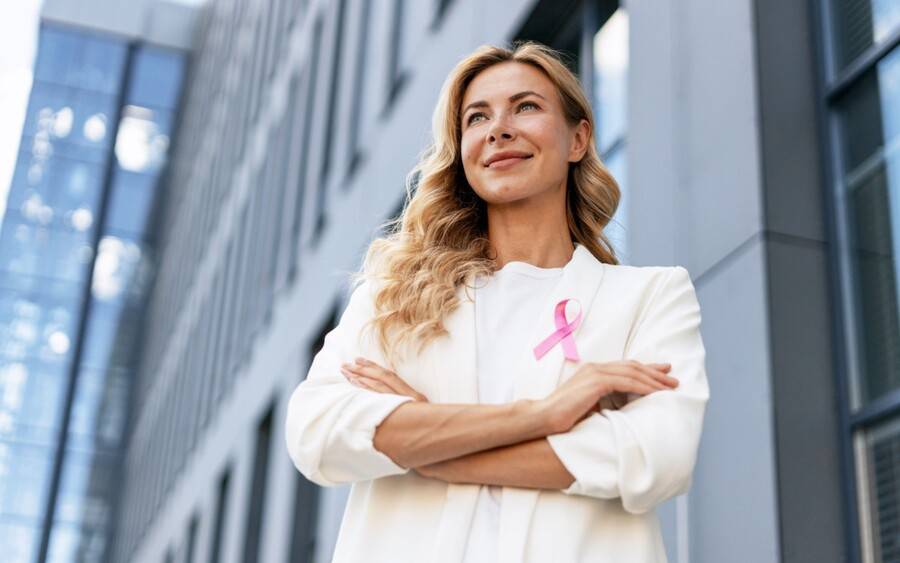Breast Health: What to Look for and When to See a Doctor
Breast self-awareness can help with early detection of breast cancer

Breast self-awareness can help with early detection of breast cancer
Breast cancer affects 1 in 8 women in the United States. It’s the second most common cancer among women, after skin cancer.
The good news? Finding breast cancer early increases the chances of successful treatment and in many cases early stage-breast cancer is easier to treat. That’s why it’s so important to stay aware of your body and speak up about changes.
While monthly breast self-exams were once widely recommended, leading organizations like the American Cancer Society now encourage something more intuitive: breast self-awareness.
“Being familiar with your own body is empowering,” says Farah Nasraty, MD, a breast medical oncologist at Scripps Cancer Center and Scripps Clinic Rancho Bernardo. “If you notice something unusual, don’t wait. Talk to your doctor. We can then determine the appropriate follow-up tests, such as specialized imaging or a targeted exam, to help us provide answers quickly.”
What is breast self-awareness?
Breast self-awareness means knowing what’s normal for your breasts — including the tissue, nipples and nearby underarm area — so you can recognize changes early. It’s not about following a strict monthly checklist. It’s about knowing your body and taking action if anything seems off.
Changes to watch for:
- A new lump or hard knot
- Swelling, warmth or redness
- Skin dimpling or puckering
- Nipple changes or discharge
- Pain in one spot that doesn’t go away
Three simple ways to become more aware of breast changes
You don’t need a strict routine. Just be mindful during daily activities like dressing, showering or lying in bed. Here’s how to stay in tune with your body:
1. In the shower
Many women find that water makes their skin easier to inspect. Using the pads of your fingers, check the entire breast and armpit area. Feel for any lumps, thickening or hard-feeling knots.
2. In front of a mirror
Visually inspect your breasts with your arms at your sides, then repeat with arms overhead. Look for changes in the contour, changes in the nipples and any swelling or dimpling of the skin. Flex your chest and look again for dimpling, puckering or changes, particularly on one side.
3. Lying down
Place a pillow under your right shoulder and your right arm behind your head. Using your left hand, move the pads of your fingers around your right breast and armpit. Use light, medium and firm pressure. Squeeze the nipple, checking for discharge and lumps. Repeat this process on your left side.
What to do if you find a lump in your breast
Most breast changes aren’t cancer, especially in younger women. But if you develop breast cancer, early diagnosis offers more treatment options.
Always talk to your doctor if something feels or looks different.
Even if you’re under age 40 and not yet getting routine mammograms, your doctor may recommend imaging tests like ultrasound, diagnostic mammogram or magnetic resonance imaging (MRI).
“If you notice a breast lump or something unusual during a self-check, please do not hesitate to contact your doctor, regardless of your age,” Dr. Nasraty says. “While screening mammography typically begins at age 40, a suspicious finding at any age warrants clinical attention. We can then assess the risk and recommend appropriate imaging and follow up."
Breast cancer screening guidelines
For most women at average risk, screening mammograms begin at age 40. These low-dose X-rays — sometimes called rays of the breast — can detect cancer before symptoms appear. In some cases, additional imaging — such as an MRI which uses radio waves and magnets instead of radiation — may be used for high-risk patients.
A clinical breast exam (CBE), performed by your provider, may also be part of your routine check-up, depending on your age and risk factors.
How Scripps supports early detection
Scripps offers comprehensive breast care across San Diego County, including:
- 3D tomosynthesis and 2D digital mammography
- Breast MRI and ultrasound
- Breast-specific gamma imaging (BSGI)
- Care from specially trained radiologists and breast care teams
Trust your instincts
If something doesn’t seem right, don’t wait. Contact your doctor or visit a Scripps breast care center. Being proactive about your breast health could help you catch problems early — when they’re most treatable and less invasive to address.